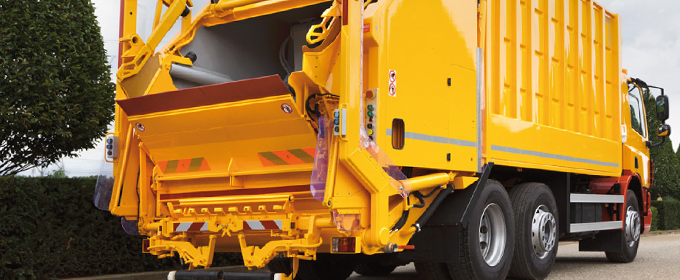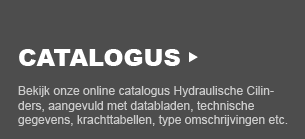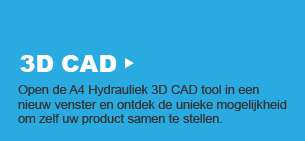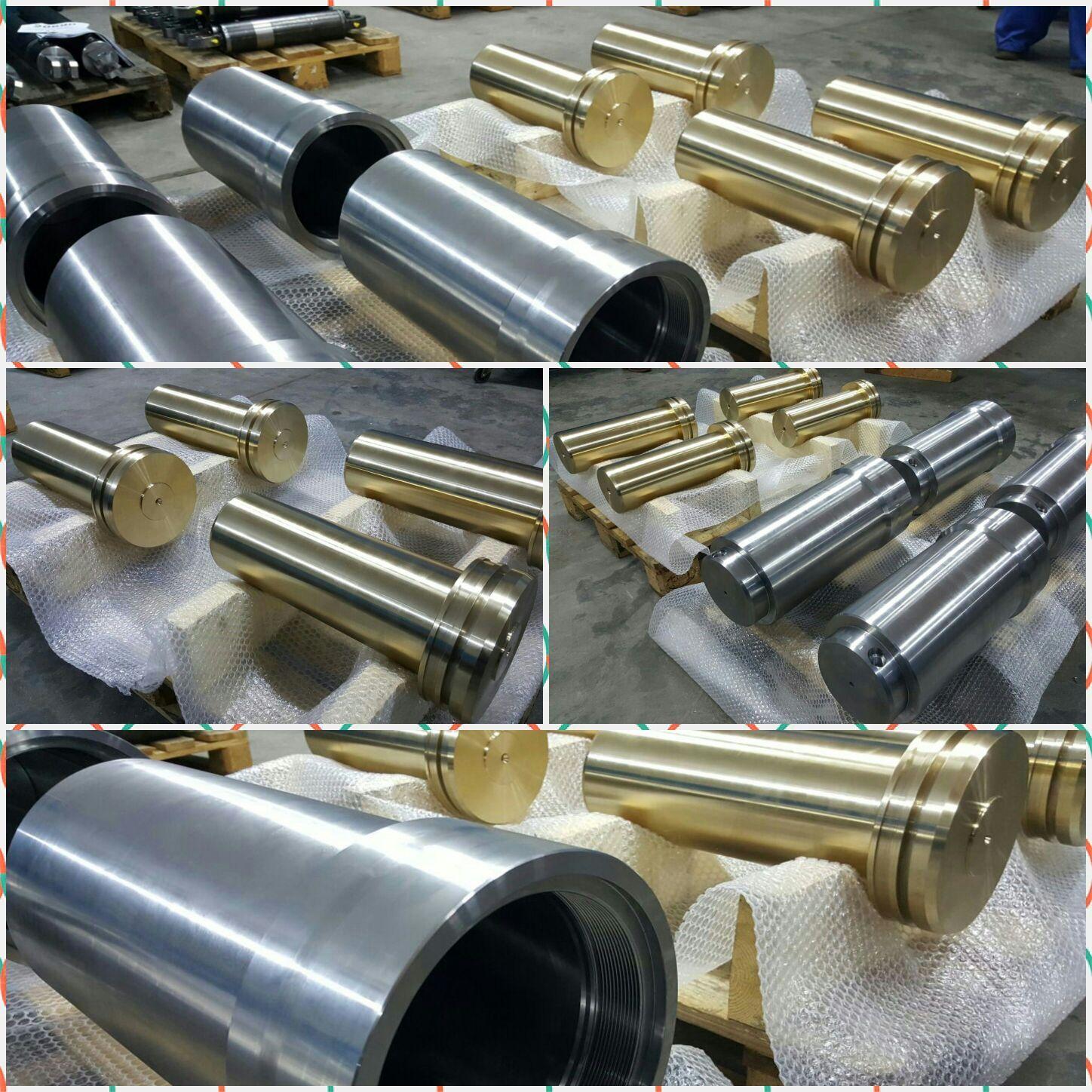132 Cardinal Sins of Hydraulics
When it comes to hydraulics,
I don't think you ever know it all.
There's always something to learn,
AND there's always a deeper level
of understanding to be had
about the things you do 'know'.
In this respect,
'132 Cardinal Sins of Hydraulics'
is a handy checklist,
so download your copy now
Yours for better hydraulics knowledge,
Brendan Casey
What is the 'diesel effect'
The diesel effect occurs in a hydraulic cylinder when air is drawn past the rod seals, mixes with the hydraulic fluid and explodes when pressurized.
How does this happen?
When a double acting cylinder retracts under the weight of its load, the volume of fluid being demanded by the rod side of the
cylinder can exceed the volume of fluid being supplied by the pump.
When this happens, a negative pressure develops in the rod side of the cylinder, which usually results in air being drawn into the cylinder past the rod seals. This occurs because most rod seals are designed keep high-pressure fluid in the cylinder and are not designed to keep air out. The result of this is aeration - the mixing of air with the hydraulic fluid.
Aeration causes damage through loss of lubrication and overheating, and when a mixture of air and oil is compressed in a cylinder it can explode, damaging the cylinder and burning its seals. As you have probably gathered, the term 'diesel effect' is a reference to the combustion process in a diesel engine.
by Brendan Casey
Technisch Commercieel medewerker:
A4 Hydrauliek B.V.
Functie omschrijving
De Technisch commercieel medewerker opereert op het snijvlak van hydrauliek, materiaalkunde en mechanica. Zowel zelfstandig als ook in teamverband werkt hij aan één of meerdere projecten. Verder levert hij of zij een actieve bijdrage aan het onderhoud met bestaande en nieuwe klanten.
De aandachtsgebieden zijn breed en zullen onder andere bestaan uit:
· Processtructuren uitwerken
· Procescalculaties voorbereiden/controleren
· Opzetten van nieuwe technische berekeningen en simulaties voor zowel statische als dynamische belastingen volgens geldende internationale berekeningen.
· Contact onderhouden met de diverse kennisinstituten;
· Het onderzoeken van en advies uitbrengen over het oplossen van technische problemen, zowel intern als ook bij onze klanten.
· Zeer goede beheersing van de Engelse en Duitse taal in woord en geschrift (Pré)
Wat vragen wij?
Je hebt een afgeronde HBO/MBO opleiding richting Werktuigbouwkunde en indien mogelijk met werkervaring in een soortgelijke functie. Je hebt ervaring/affiniteit met hydrauliek en het maken van technische sterkteberekeningen. Ervaring met moderne 3D-CAD pakketten is een pré. Verder beschik je over een praktische doelgerichte instelling en werk je graag in teamverband. Steekwoorden als analytisch, creatief, innovatief en kwaliteitsbewust zijn op jou van toepassing. Buitenlandse Europese reizen zijn voor jou ook geen probleem.
Wat bieden wij?
Wij bieden je een fulltime dienstverband in een dynamische organisatie waarbij de techniek zich bevindt op de top van de huidige mogelijkheden. Je krijgt kansen voor groei en ontwikkeling en jouw kwaliteiten en talenten worden gewaardeerd. De arbeidsvoorwaarden van A4 Hydrauliek B.V. zijn goed te noemen. Indien gewenst krijg je opleidingen en trainingen.
A4 Hydrauliek B.V., gevestigd in Kampen, ontwikkelt en produceert ruim 40 jaar hoogwaardige hydraulische cilinders. Deze worden in standaard of klant specifieke uitvoeringen toegepast in maritieme toepassingen, afval- en recyclingtechniek, offshore, transportvoertuigen, grondverzetmachines en algemene machinebouw. Een dynamisch en informeel bedrijf, waar kwaliteit hoog in het vaandel staat.
Reacties aan: Dit e-mailadres wordt beveiligd tegen spambots. JavaScript dient ingeschakeld te zijn om het te bekijken.
A Hydraulic cylinder (also called a linear hydraulic motor)
A Hydraulic cylinder (also called a linear hydraulic motor) is a mechanical actuator that is used to give a unidirectional force through a unidirectional stroke. It has many applications, notably in engineering vehicles.
Hydraulic cylinders get their power from pressurized hydraulic fluid, which is typically oil. The hydraulic cylinder consists of a cylinder barrel, in which a piston connected to a piston rod moves back and forth. The barrel is closed on each end by the cylinder bottom (also called the cap end) and by the cylinder head where the piston rod comes out of the cylinder. The piston has sliding rings and seals. The piston divides the inside of the cylinder in two chambers, the bottom chamber (cap end) and the piston rod side chamber (rod end). The hydraulic pressure acts on the piston to do linear work and motion.
Flanges, trunnions, and/or clevisses are mounted to the cylinder body. The piston rod also has mounting attachments to connect the cylinder to the object or machine component that it is pushing.
A hydraulic cylinder is the actuator or "motor" side of this system. The "generator" side of the hydraulic system is the hydraulic pump which brings in a fixed or regulated flow of oil to the bottom side of the hydraulic cylinder, to move the piston rod upwards. The piston pushes the oil in the other chamber back to the reservoir. If we assume that the oil pressure in the piston rod chamber is approximately zero, the force F on the piston rod equals the pressure P in the cylinder times the piston area A:
The piston moves instead downwards if oil is pumped into the piston rod side chamber and the oil from the piston area flows back to the reservoir without pressure. The pressure in the piston rod area chamber is (Pull Force) / (piston area - piston rod area).
- Our products out of solid stainless steel and bronze
- 132 Cardinal Sins of Hydraulics
- Technisch Commercieel medewerker:
- What is the 'diesel effect'
- A Hydraulic cylinder (also called a linear hydraulic motor)
- Optimizing Controls for a Sports Machine
- RBS Romania Weekly Report
- RBS Romania Weekly Report
- 64 pieces delivered for Pieter Schelte, the ship that will be built for Allseas.
- Last year, he wanted to be a zombie for Halloween
- His movable sculptures use hydraulic cylinders
- Oil, keep it cool
- And no defect was detected in any cylinder.
- The exchanger is no longer dissipating 20 kW of heat
- Agenda november 2013
Specials
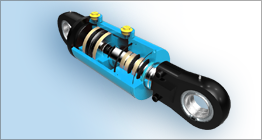
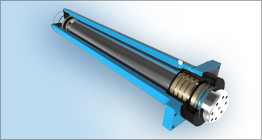
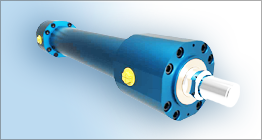


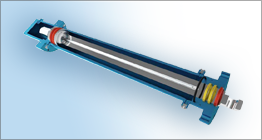
Video





